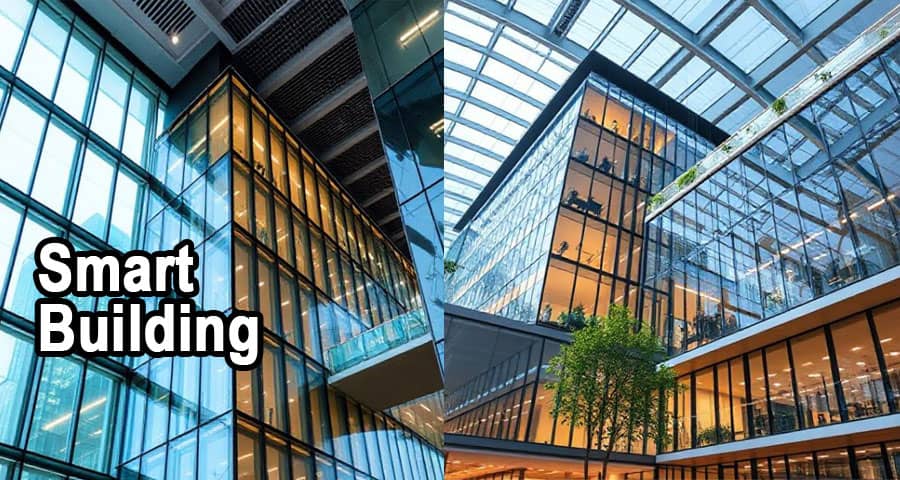Smart Building - Transforming Modern Technology

Introduction to Smart Building Technology
In the evolving landscape of architecture and urban development, smart buildings have emerged as a beacon of technological innovation. These structures are not merely physical spaces; they are intelligent ecosystems designed to optimize energy use, enhance occupant comfort, and integrate advanced automation systems. By seamlessly blending information technology, building systems, and data analytics, smart buildings offer a futuristic vision of sustainable and efficient urban living.
Core Components of a Smart Building
1. Building Management Systems (BMS)
At the heart of any smart building lies a sophisticated Building Management System (BMS). This centralized platform monitors and controls critical systems such as HVAC (Heating, Ventilation, and Air Conditioning), lighting, security, and energy management. Through real-time data collection and automation, BMS enables optimized performance and operational efficiency.
2. Internet of Things (IoT) Integration
IoT devices are the neural network of smart buildings. Sensors, actuators, and connected devices communicate data about temperature, humidity, occupancy, and lighting preferences. This continuous data stream enables predictive maintenance, adaptive environmental control, and energy-saving initiatives.
3. Energy Efficiency and Sustainability
Smart buildings prioritize energy conservation. Through smart meters, automated lighting, and renewable energy sources, they reduce carbon footprints while maintaining comfort. Intelligent analytics identify consumption patterns and suggest actionable improvements to ensure sustainable operations.
Benefits of Smart Building Technology
Enhanced Energy Efficiency
Smart buildings drastically cut down on energy waste by automating systems based on occupancy and time of day. LED lighting, smart thermostats, and power monitoring systems work in concert to ensure energy consumption is optimized without sacrificing comfort.
Operational Cost Reduction
Automation translates to reduced manual intervention, leading to lower maintenance costs and improved resource allocation. Predictive analytics anticipate system failures and schedule maintenance, thus minimizing downtime and repair expenses.
Improved Occupant Experience
Through advanced climate control, adaptive lighting, and real-time environmental monitoring, occupants enjoy a healthier and more comfortable environment. Features such as touchless access, customizable workspaces, and personalized temperature zones significantly enhance user satisfaction.
Heightened Security and Safety
Smart buildings incorporate advanced security protocols, including facial recognition, biometric access control, and 24/7 surveillance integrated into a centralized dashboard. Automated emergency response systems, such as fire detection, alarm systems, and evacuation protocols, are triggered in real-time, ensuring swift and effective responses.
Key Technologies Driving Smart Buildings
Artificial Intelligence (AI) and Machine Learning
AI algorithms analyze vast amounts of building data to detect patterns and suggest improvements. These systems learn occupant behaviors and dynamically adjust systems like lighting, temperature, and airflow, ensuring an intelligent adaptive environment.
Cloud Computing and Edge Computing
Cloud platforms enable real-time data accessibility, remote control, and scalability of building systems. Edge computing complements this by processing data locally, reducing latency and enabling faster decision-making in critical scenarios.
5G Connectivity
With the advent of 5G networks, smart buildings gain high-speed, low-latency connectivity, which is essential for handling the massive data exchange between IoT devices and centralized systems. This enables seamless communication and real-time responsiveness.
Smart Building Use Cases Across Industries
Commercial Buildings
In commercial real estate, smart buildings provide dynamic workspace management, energy-efficient operations, and enhanced employee productivity. Smart desks, digital signage, and automated conferencing systems create a seamless, collaborative environment.

Healthcare Facilities
Hospitals and clinics benefit from smart HVAC for infection control, real-time asset tracking, and patient monitoring systems. These innovations improve patient care, operational efficiency, and safety.
Educational Institutions
Smart campuses employ automated lighting, interactive learning environments, and AI-driven attendance monitoring to elevate the academic experience. Energy-efficient infrastructures support institutional sustainability goals.
Residential Complexes
Smart homes within buildings offer residents intelligent lighting, climate control, security systems, and voice-activated assistants. These conveniences improve lifestyle quality while conserving energy.
The Role of Data in Smart Building Ecosystems
Data is the foundation of any smart building. Collected through various sensors and devices, this information is processed to extract insights that drive system optimization, energy savings, and predictive maintenance. Real-time dashboards and analytics tools empower building managers with the knowledge to make informed decisions swiftly.
Cybersecurity in Smart Building Environments
As connectivity increases, so does the need for robust cybersecurity protocols. Smart buildings must protect against threats by deploying firewalls, intrusion detection systems, regular software updates, and encrypted communication. Ensuring data privacy and network integrity is paramount in maintaining occupant trust and system reliability.
Challenges in Implementing Smart Building Technology
Despite its advantages, the implementation of smart building systems poses several challenges:
- High Initial Investment: Advanced technologies demand substantial capital.
- Integration Complexity: Compatibility across legacy systems and new technologies can be difficult.
- Data Management: Handling and analyzing massive volumes of data requires sophisticated platforms and expertise.
- Skill Gap: A lack of trained personnel in building automation systems can delay implementation.
Addressing these challenges requires a strategic approach, strong partnerships, and continuous innovation.
Future Trends in Smart Building Innovation
As we look ahead, smart building technology is expected to evolve further:
- Zero-Energy Buildings: Structures that generate as much energy as they consume.
- Digital Twins: Virtual replicas of buildings that enable simulation and performance testing.
- Blockchain for Security: Enhanced data transparency and traceability through decentralized systems.
- Human-Centric Design: Personalization of environments based on biometric feedback and behavioral analysis.
These innovations will redefine how we interact with our built environment, ensuring smarter, safer, and more sustainable living and working spaces.
Conclusion: Embracing the Smart Building Revolution
Smart buildings represent a transformative shift in how we construct, manage, and experience spaces. With the integration of cutting-edge technologies, sustainability initiatives, and intelligent automation, they not only reduce operational costs but also elevate the quality of life for occupants. The journey toward fully autonomous and energy-positive buildings is underway, and the time to invest in smart building solutions is now.
Please watch the following Short video for Smart Building - Transforming Modern Technology
